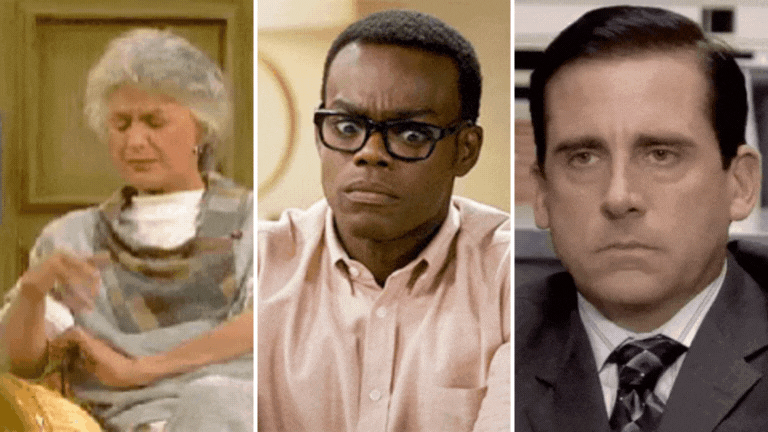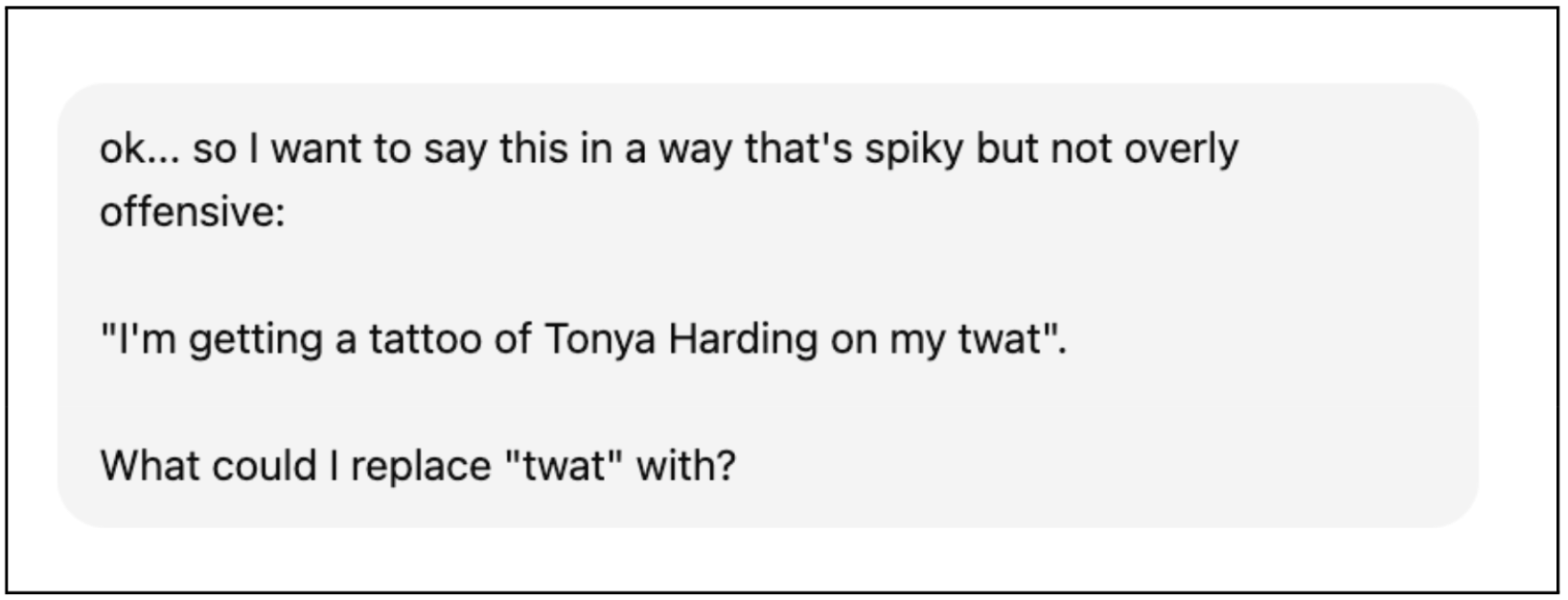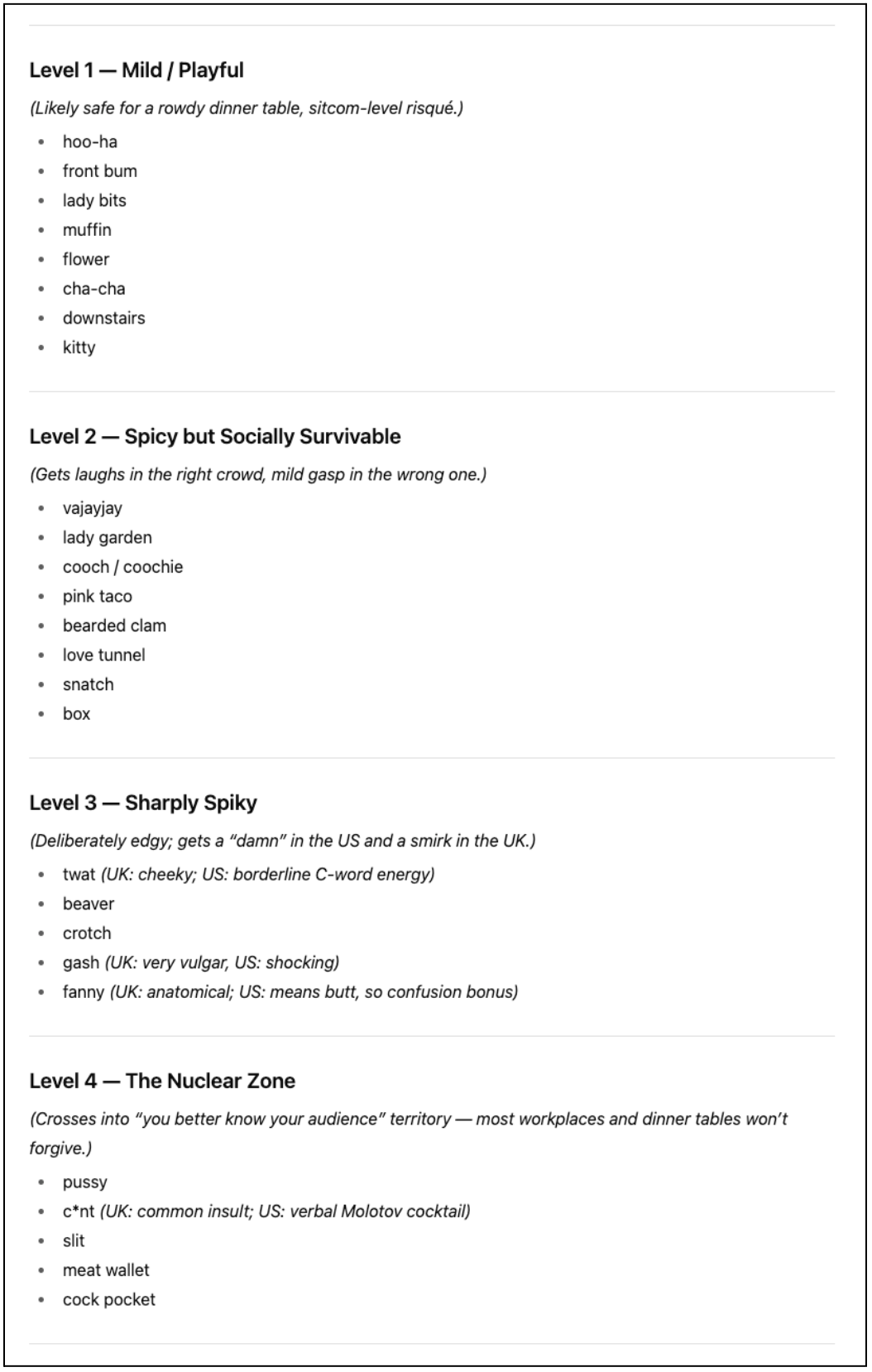Stop being shy. You’re the star of your own story. 🌟
But as we discussed last week, if you think your story is your biography, nobody will give a shit.
Instead, you should be carefully crafting your origin story — that is, your personal story of transformation. A story that answers the question:
“Why do you hold your most important belief?”
And we’re right smack dab in the middle of a 3-week series on how to pull this off (without sounding like a pompous ass):
👉 Today: Outlining the story using Kristin’s adapted Hero’s Journey framework
⏩ Next week: Pulling it all together
-Kristin 🍷
🍻 In today’s issue:
✏️ Sentence School: Why the Hero’s Journey is the best structure for your origin story — even if you don’t think you’re a hero. (Spoiler. You are.)
🥃 The Writer’s Pour: Let’s outline the hell out of this.
🎙️ Drunk Talk: I betcha can’t guess why I pop GIFs like a toddler pops skittles.
🤖 Robot Pals: AI helped me find the perfect level of offensiveness. No shit.

I’m holdin’ out for a hero
Last week, we discussed why you need an origin story, and what it should consist of.
This week, we’ll address how to write the damn thing.
And that’s where the Hero’s Journey comes in.
The Hero’s Journey was popularized by an American writer and professor named Joseph Campbell — and it’s the blueprint for transformative narratives. He describes it as a “cycle of transformation”, where the hero:
Starts in an ordinary world
Faces extraordinary challenges
And returns home, forever changed
Following this structure for your origin story will force you to step out of your own head, and approach your personal narrative the way it deserves — like you’re the badass hero we all know you are. 😉
Joseph Campbell’s Hero’s Journey is a hella extensive 12-stage process.
But personal narratives aren’t Star Wars. So I’ve adapted Joseph Campbell’s 12-stage structure into five simple stages, perfect for crafting a compelling origin story. 👇

You’re welcome.
1. An ordinary world
Every hero starts in their ordinary world, living a life that feels stable, predictable, and often small. This stage of the origin story introduces the hero and their circumstances, helping the audience connect with them.
The ordinary world shows us what’s at stake when change inevitably comes.
➡ Kristin was a young teen, waking up at 4am every day to train on the ice, chasing a dream sparked by Tara Lipinski’s Olympic gold medal. She was constantly rotating through the principles of “preparation, execution, review”.
2. A call to adventure
The call to adventure is a moment that disrupts the hero’s ordinary world, often sparked by a challenge or tragedy that sets the story in motion. The call to adventure forces the hero to leave their comfort zone, whether they’re ready or not.
➡ When she took a crashing fall in practice one day, Kristin knew something was desperately wrong, but she pushed through immense pain to compete at the first round of Olympic qualifying competitions.
3. A tough ordeal
A tough ordeal is a critical test or challenge that pushes the hero to their limits. This ordeal often represents a turning point — and the hero’s success or failure in handling that ordeal will define the story.
The ordeal is where the hero’s resilience and courage are truly tested.
➡ Returning home from the competition, in excruciating pain, and with no medals to show for her efforts, Kristin receives the devastating news that she has broken her hip — and can’t skate for an entire year.
4. A transformation
After surviving the ordeal, the hero is transformed. This transformation often involves newfound strength, wisdom, or acceptance.
This transformation marks the hero’s growth and readiness to move forward.
➡ Forced off the ice, Kristin discovered a new identity at the rink — not as an athlete, but as a business operator — applying her athletic principles in unexpected ways.
5. A resolution
Finally, the story resolves. The hero returns to a new ordinary world, but that world is now forever changed, because our hero is carrying the lessons and challenges they've gained throughout their journey.
➡ 25 years later, Kristin reflects that her failure to win Olympic gold had become the catalyst that propelled her into an exciting career where she made a far greater impact than she ever could have on the ice.


Dive into some exercises to put what you’ve just learned about the Hero's Journey structure into practice. 👇️
Exercise #1 - Short ⏱
Choose the belief or value you want to center your origin story around.
Last week, you:
-Listed your three most important beliefs.
-Wrote about your biggest anti-value.
-Had AI interview you about them to help determine the “why” behind those beliefs and values.
(If you missed last week, you can catch up here!)
Today, you’re going to choose which one to base your origin story on.
Incorporating what you learned today about the Hero’s Journey, choose the belief that’s most closely tied to a personal transformation.
Exercise #2 – Long ⏳
Now you’re going to outline your origin story using the Hero’s Journey framework, centering it around the belief you’ve just chosen.
I’ve created an outline template for you here (just click “file” then “make a copy”, and it’s yours!)
Work through the outline template and answer all of the questions to help narrow the focus of your story, and uncover crucial details.
And most importantly — have fun with this process!
If you’re getting stuck, try choosing a different value / belief to center your story around. You may have to combine a few, or you might even discover that your most transformational moment has nothing to do with the beliefs you determined last week.
All of that is ok.
Everything I’ve shared with you is a guideline — not a rule. Stay true to yourself.

Why do I use GIFs all the damn time?
Universal truth: facial expressions are far more impactful than words.
Drunk Business Advice is peppered with GIFs.
But here’s the thing — I don’t include them because they’re funny. I include them because they amplify the emotions in my story, which both cuts down on the words I need to use (yay conciseness), and heightens the stakes (more on that in a future issue).
Nothing communicates disgust better than Dorothy, anxiety better than Chidi, or pure over-it-ness better than Michael Scott.

It’s also a good way to let my audience know which shows I love binging. Source: Giphy
Don’t just use GIFs for fun. Use them to help your audience feel what you want them to feel.
I use two sources for my GIFs:
And I must give a disclaimer here —
I’m not a lawyer, so this is not legal advice, but — if you’re using a GIF that you don’t own, cite your sources. Generally, citing a source is enough for editorial and personal content in the U.S. But it gets really hairy when you’re advertising something, so it’s not wise to use images you haven’t legally licensed for commercial use (otherwise it might look like Taylor Swift is endorsing your deodorant brand, and lord knows how litigious she is). Check with an attorney if you’re unsure.
If you read Sunday’s issue of Drunk Business Advice, you would have seen a GIF of… ME!

Yep. That’s me dancing a jig on crutches.
One of you reached out asking “how the hell did you do that?”.
It’s actually super simple. I create custom GIFs using Canva — here’s how.

I don’t wish to offend…
In Sunday’s issue of Drunk Business Advice, I was struggling with… well… saying something offensive not too offensively.
Y’all know that I write how I talk. And I talk pretty spicy.
(My parents were in show business, I lived in Australia, and married a sailor. I’m not trying to be edgy. This is just how I communicate naturally.)
Unfilteredness is a core pillar of Drunk Business Advice. My audience expects me to be cheeky (and I don’t mind offending pearl-clutching prudes), but there are definitely lines that I must be careful to not cross.
Not just because I don’t want to be too offensive, but because a certain level of offensiveness is simply not authentic to who I am.
And verbiage about female anatomy is one of those red-zones.
So I turned to ChatGPT for help:

And boy, did it deliver. 😆

I went with “hoo-ha”. It was low on the offensive scale (I hope), and carried a nice alliterative ring with “Tonya Harding”.
But I’m truly laughing my ass off at all the colorful options…
I don’t take my place in your inbox for granted.
It’s an honor to be welcomed into your world, and I know I have to work to continue to earn it, week after week. So if you have feedback, or if there’s a topic you want me to cover, just hit reply and tell me!
And if you love Drunk Writing Advice, consider sharing it with a friend. 🥰

